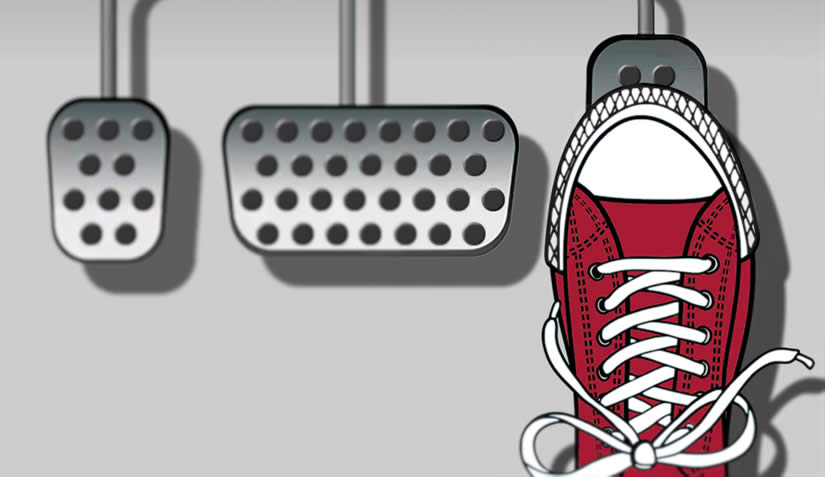Do You Use the Accelerator When Reversing
Whether or not you need to use the accelerator when reversing depends on:
- Whether you’re driving a petrol or diesel car
- Weight of the vehicle
- Gradient of the road
- What you intend on doing
Whether You’re Driving a Petrol or Diesel Car
A diesel car typically produces more torque at a lower RPM than a car fitted with a petrol engine. You can think of ‘torque’ as pulling power and ‘RPM‘ as the engine speed or ‘revs’. If you’re reversing without using the accelerator, the speed of the engine will be low.
You’ll often find small ‘city’ cars fitted with petrol engines because they are light and don’t require much torque. Diesel engines are better suited to heavier and larger vehicles, vans and lorries because of the superior pulling power compared to petrol engines.
Due to diesel engines having greater torque even at lower engine speeds, it’s often easier to reverse in a car with with a diesel engine without having to use the accelerator.
Weight of the Vehicle
A small compact ‘city’ car can weigh around 1300 kilograms and compared to a larger car, you can add an additional 500 kilograms to that. That extra half a ton takes extra effort to get moving. Depending on your engine type and other circumstances, you may still be able to reverse without using the accelerator, but the weight of the vehicle may impact this.
Gradient of the Road
If you are reversing on a downhill gradient, you’re far less likely to need to use the accelerator and can control the vehicle speed by use of clutch and brake only. On a steeper downhill gradient, you can simply use the brake only.
If you are reversing uphill, then you’re far more likely to require the use of the accelerator to provide the engine will a little more power. This is simply due to the engine requiring more power to push the weight of the vehicle uphill.
What You Intend on Doing
What you intend on doing while reversing is going to be relative to your speed. Reverse gear has a similar ratio to 1st gear, which means you can drive in excess of 20 mph – though due to your observations being severely restricted while driving backwards, that’s not a good idea.
Usually we use reverse gear due to a manoeuvre such as parking and so the natural idle speed of the engine usually provides enough power to move the car at a sufficient speed with use of the clutch and brake only.
Should You Use the Accelerator for Reversing on a Driving Test?
During a practical driving test, you’ll be expected to carry out a manoeuvre; either parallel parking, forward bay parking, reverse bay parking or parking up and moving off from the right. All manoeuvres require reversing.
There’s no specific technique that you should use for reversing, provided that you demonstrate that you have good control of the vehicle and that you also demonstrate that you take safety into account. You should carry out manoeuvres very slowly, regardless of whether you sue the accelerator for reversing or not.
